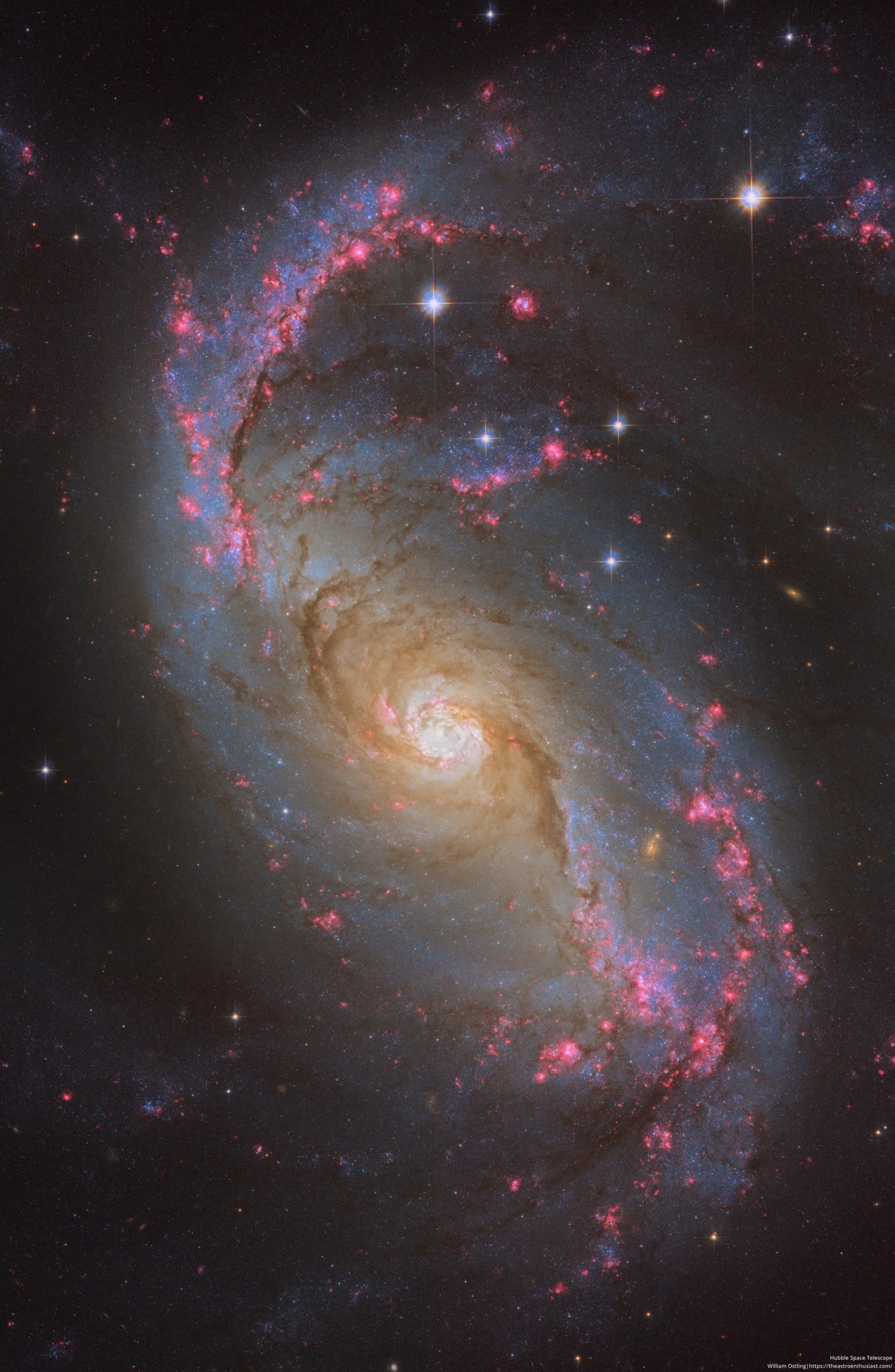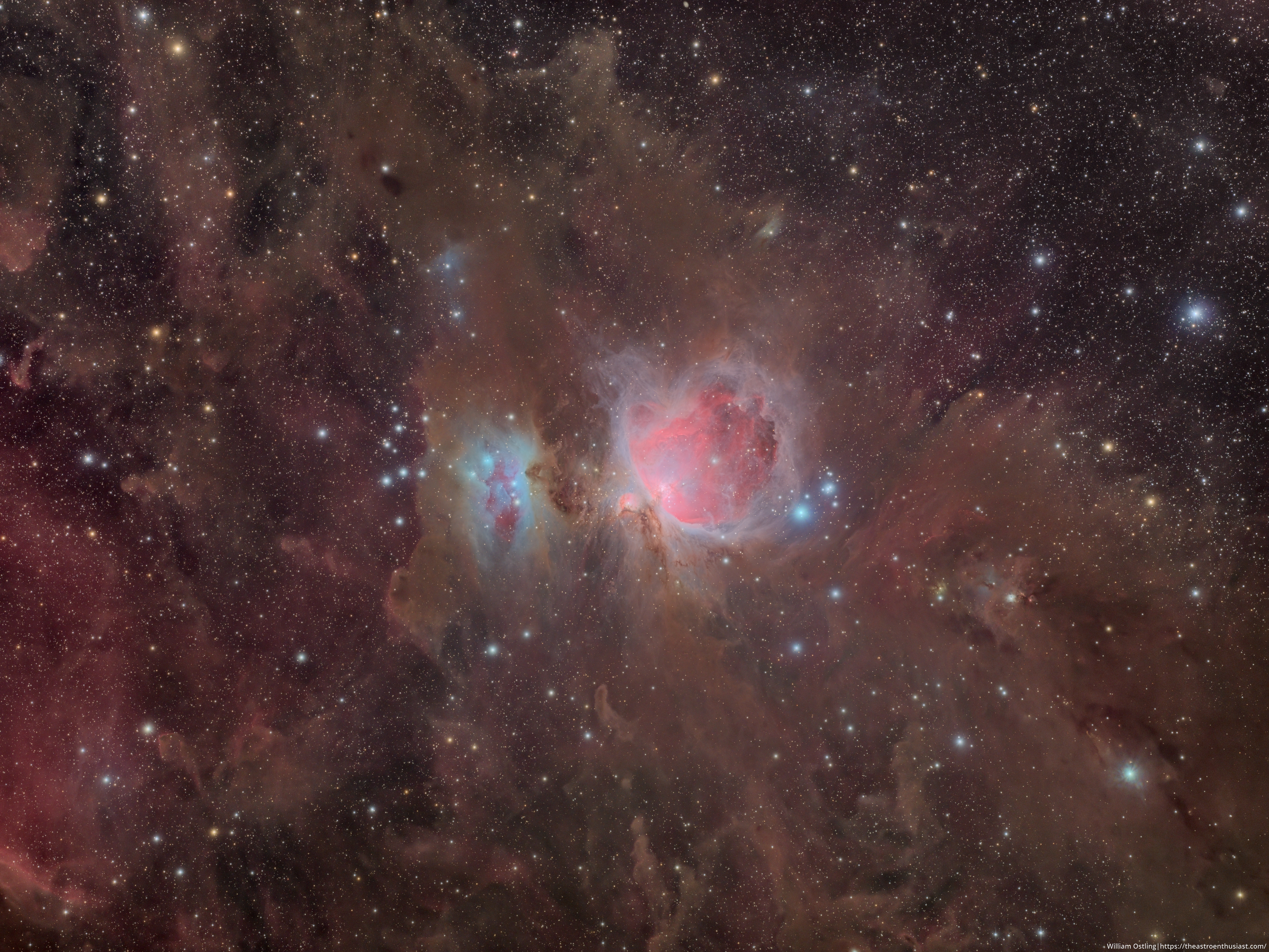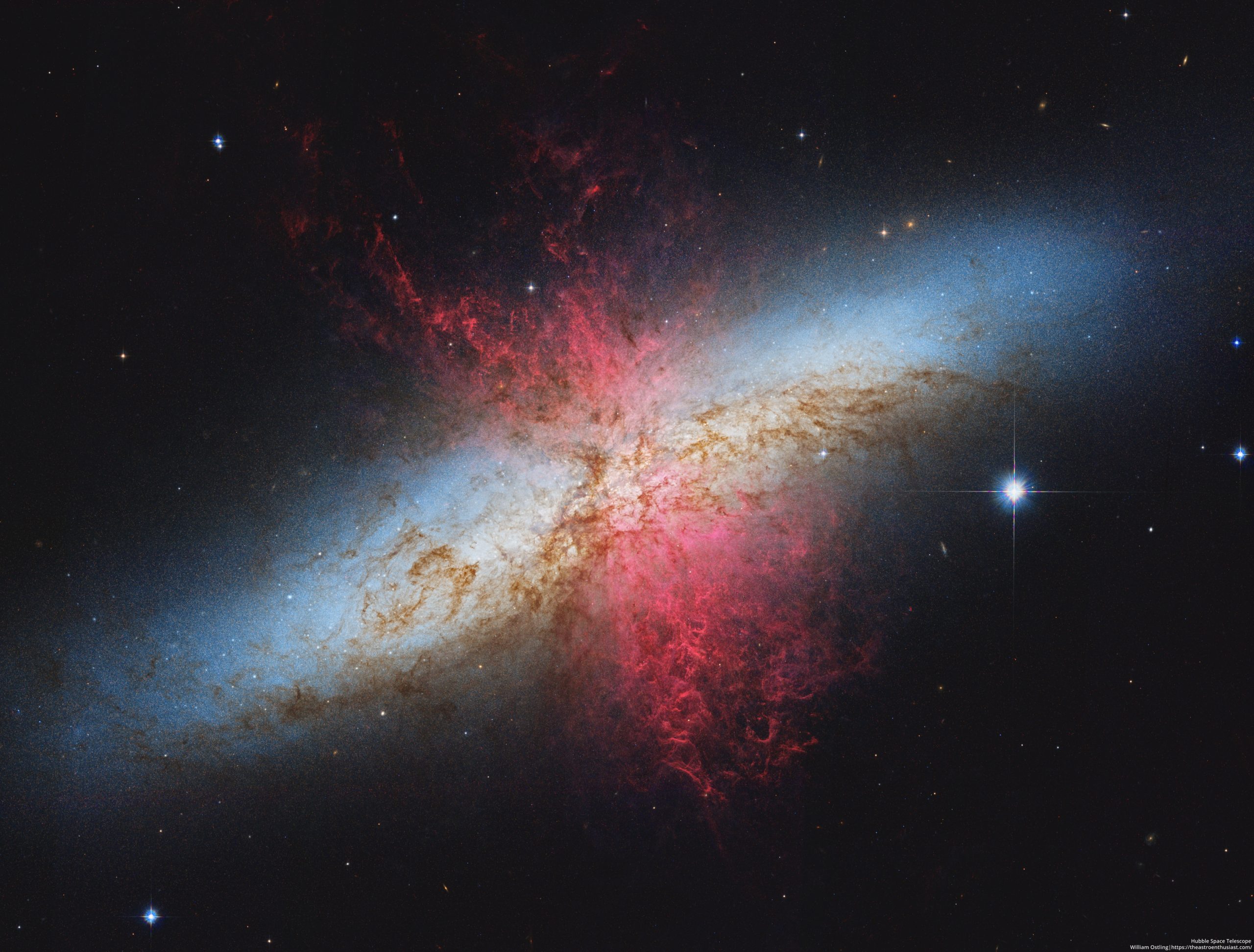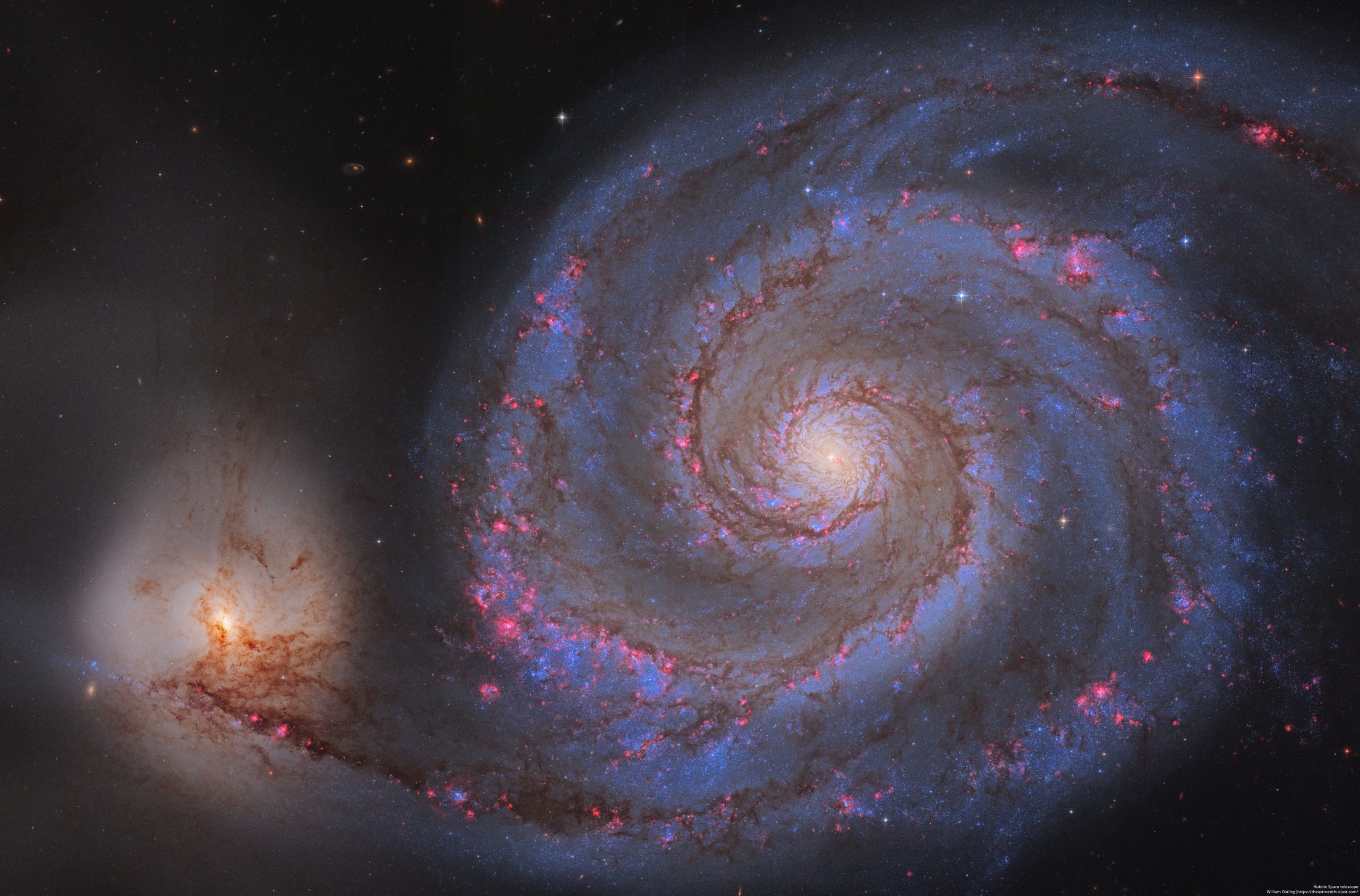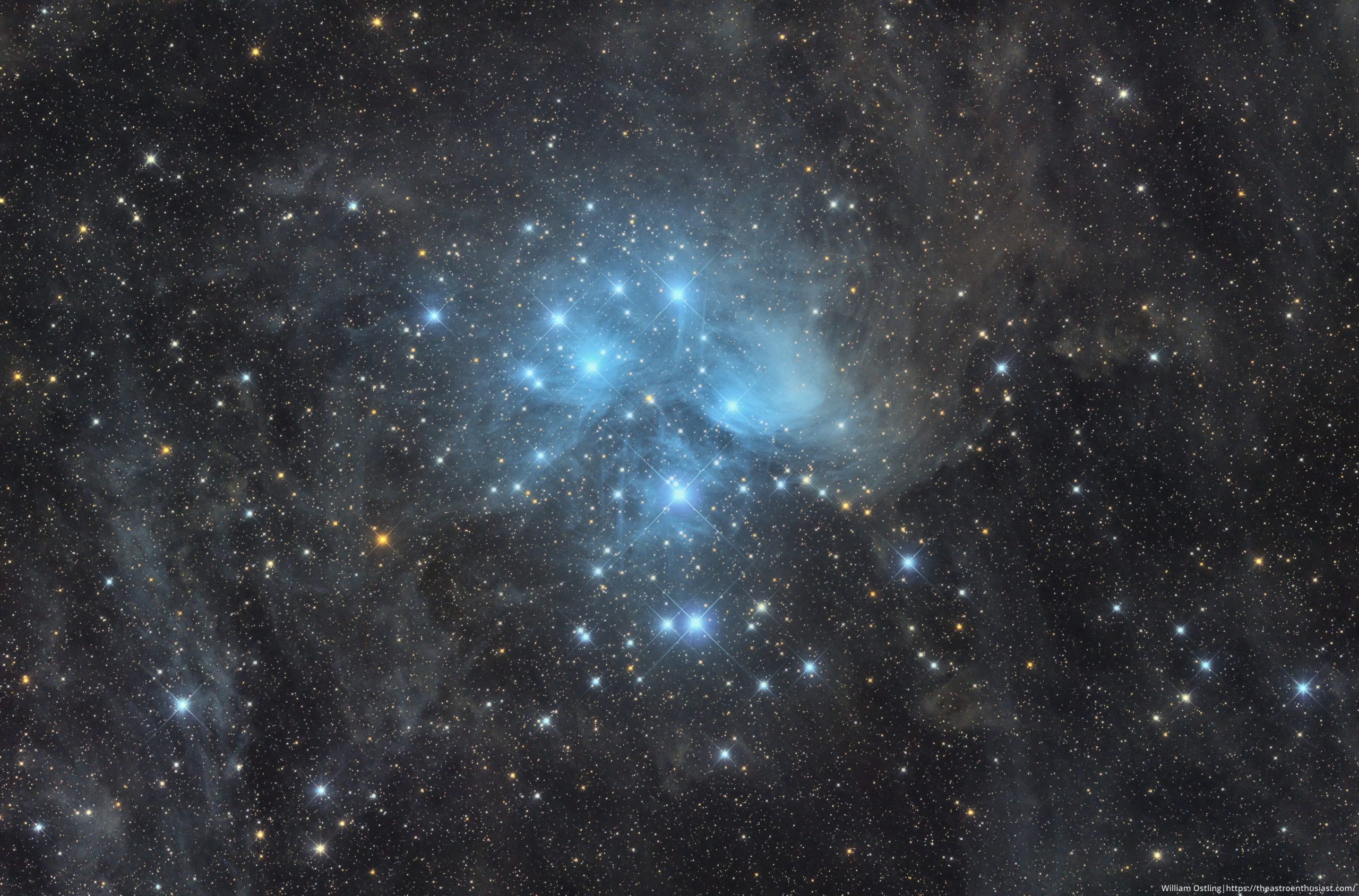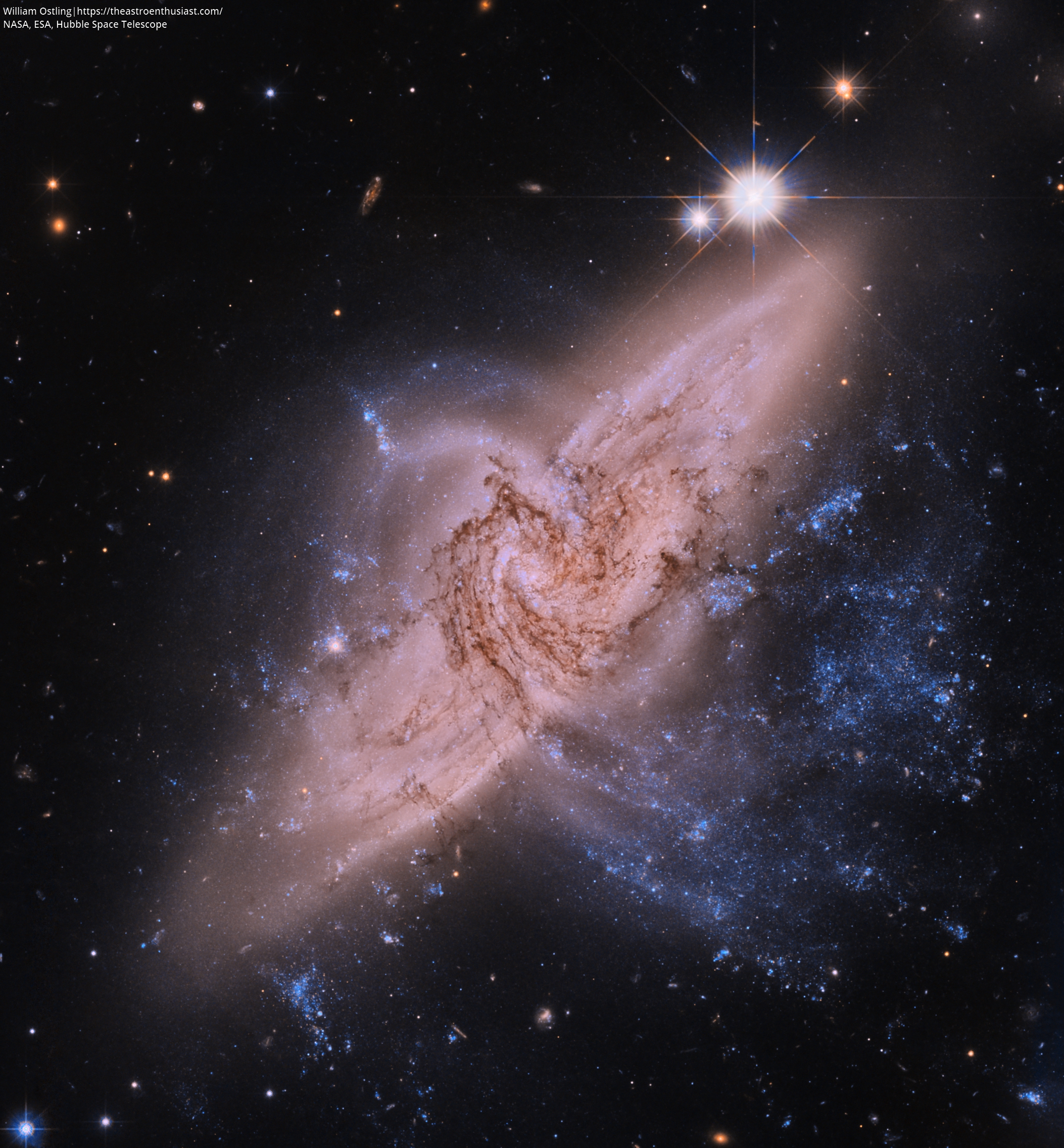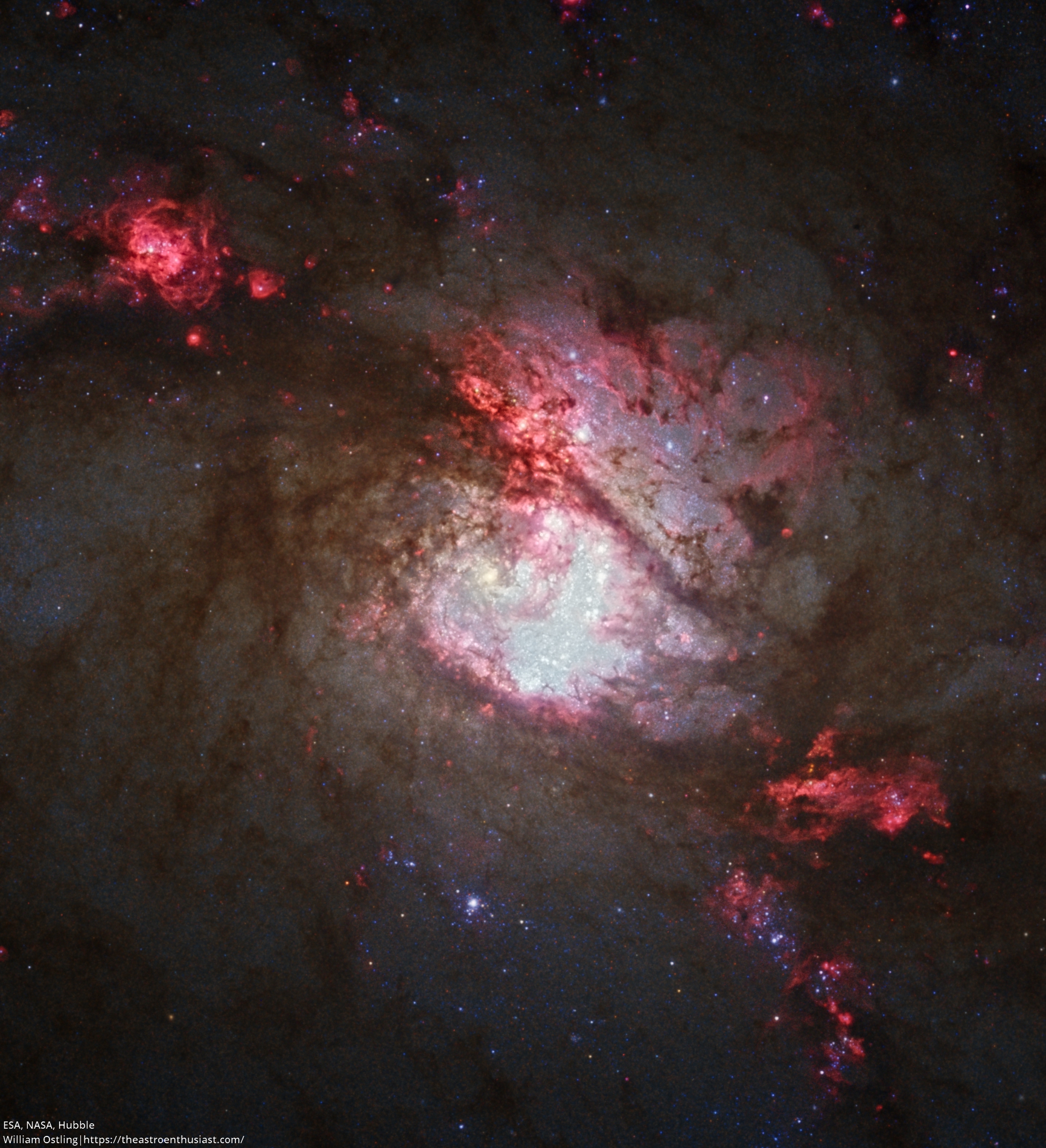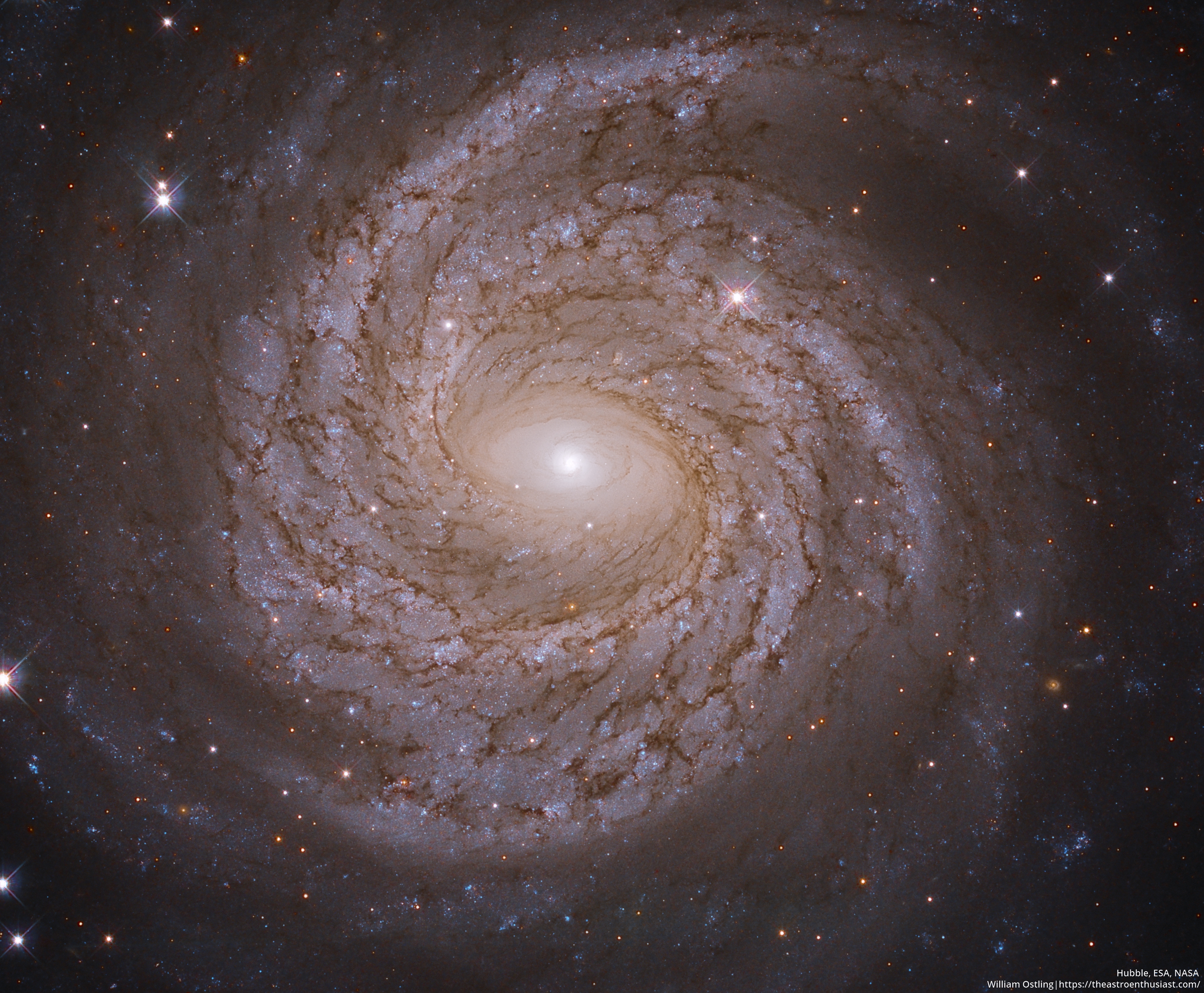Nebulosity in the Auriga Region
This image showcases much of the nebulosity in the Auriga region in its natural colors. On the left is the flaming star nebula, an emission-reflection nebulae ionized by the star at its core. The blue parts are reflection, and the red parts are emission. At top center lies the tadpole nebula, a strong emission nebula. On the left are the spider and fly nebulae, two complex regions, of dark nebula, dust, emission nebulae, and reflection nebulae. Below theses two nebula is an open star cluster. Scroll down […]
Read more
